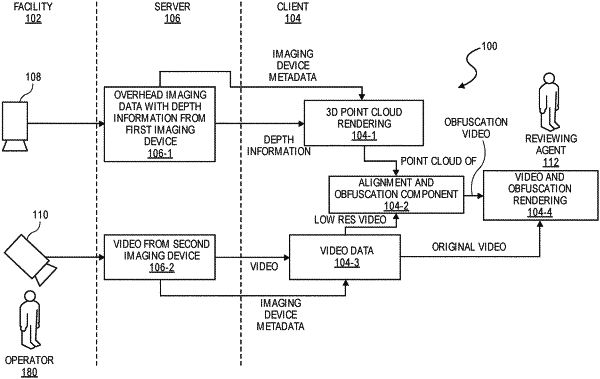| CPC G06T 19/006 (2013.01) [G06T 7/75 (2017.01); G06T 17/00 (2013.01); G06V 10/143 (2022.01); G06V 20/52 (2022.01); G06V 20/653 (2022.01); G06V 40/103 (2022.01); G06T 2215/16 (2013.01)] | 20 Claims |

|
9. A system, comprising:
an imaging device aligned to include at least a portion of a location within a field of view of the imaging device; and
a computing device in communication with at least the imaging device, wherein the computing device is configured to at least:
receive, from the imaging device, a first video frame representative of the location;
determine a first plurality of pixels of the first video frame that are representative of a first foreground object positioned at the location;
generate an obfuscation mask that indicates a second plurality of pixels corresponding to the first plurality of pixels that are to be obfuscated;
generate, based on the first video frame, a second video frame, wherein the second video frame is a lower resolution video frame of the first video frame, wherein the lower resolution is such that an identity of the first foreground object cannot be determined from the second video frame;
determine a third plurality of pixels of the second video frame that do not correspond to the second plurality of pixels of the obfuscation mask;
set color values for each of the third plurality of pixels to transparent; and
generate, based at least in part on the first video frame and the second video frame, an obfuscated video data such that the object cannot be identified when the obfuscated video data is presented.
|